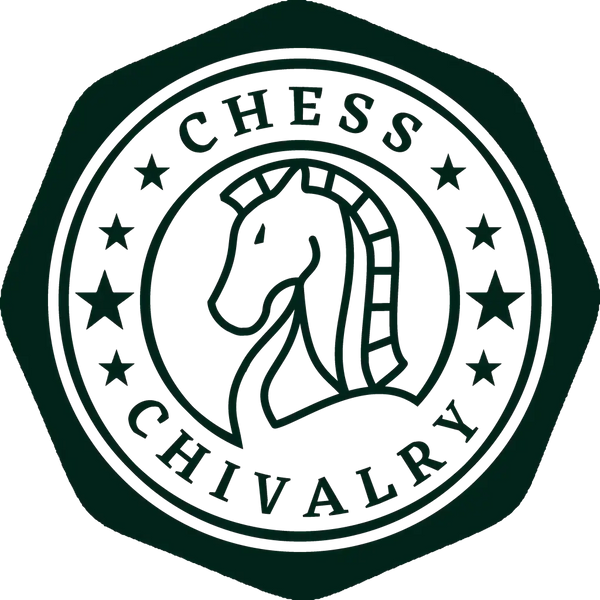
Chess & History: The FIDE
Share
The Fédération Internationale des Échecs (FIDE) is the umbrella organization of chess and as such regulates all chess competitions at the international level. The foundation of FIDE was announced in 1924 in Paris at an amateur tournament by Pierre Vincent and a committee was charged with drawing up a constitution. The founding member countries were Argentina, Belgium, Canada, Czechoslovakia, Finland, France, Hungary, Italy, Netherlands, Poland, Romania, Spain, Switzerland, and Great Britain. Each of the countries provided a signatory for the founding charter, manifesting the will for international regulation of chess.
Hosting of the Chess Olympiad and the World Championship
As early as 1926, FIDE decided to organize a Chess Olympiad, then called the Tournament of Nations. This tournament was held for the first time in London the following year, won by Hungary. The Women's World Championship was also held at the same time, while the Women's Chess Olympiad was to follow much later. The Chess Olympiad held in London should therefore not be confused with the World Championship, even though FIDE always strove to hold such a championship. But it took some time until a first tendency towards a suitable form of staging became recognizable. The Second World War, however, interrupted all efforts for such a competition and it became quiet in chess. It was not until 1948, as a result of the end of the war, the accession of the Soviet Union to the federation and the interregnum following Alexander Alekhine's death, that FIDE gained control of the World Championship. The competition was held in The Hague and Moscow, and the world champion was Mikhail Botvinnik.

Chess Olympiad 1954, Soviet team, from left to right: Kotov, Geller, Smyslov, Bronstein, Keres, Botvinnik and Bondarevsky, Photo: Joop van Bilsen
Achievements of FIDE
The following decades after the first FIDE World Championship were marked by far-reaching changes in tournament operations and an expansion of the chess federation's international infrastructure. From 1950, FIDE officially awarded the titles of Grandmaster and International Master. In 1957, the first Women's Chess Olympiad was held. 1970 saw the introduction of ELO numbers, named after its inventor Arpad Elo. The number of member federations also increased significantly in the 1970s, which can be attributed to the expansion course of the then president Max Euwe. In 1999, the Chess Federation succeeded in having chess officially recognized as an Olympic sport by the Olympic Committee. In the 2000s, far-reaching rule changes for tournament play were also adopted, but these only managed to establish themselves to a limited extent and were interpreted in an increasingly tolerant manner at competitions. These included a shorter time limit and harsher penalties for misconduct or tardiness.
FIDE Scandals and Boycotts
However, the decades were also marked by a large number of scandals, which were primarily due to political circumstances or manipulative motives. In 1962, for example, FIDE decided that the world championship should be played in competitive format via candidate tournaments after suspicions arose that players were colluding on game results. A few years later, however, the tournament rules were interpreted so generously that Bobby Fischer was able to take part in the 1972 World Championship even though he had not actually qualified for it. As a result, the tournament developed into a political spectacle that caused a worldwide sensation and was more about politics than chess. In the end, Bobby Fischer won against Boris Spassky. In 1976, the Soviet Union boycotted the World Championship because it was being held in Israel and diplomatic relations between the countries were strained. Moreover, in the same year, Russian player Viktor Korchnoi defected to the West at a tournament in Amsterdam, while at the same time receiving support from then FIDE President Max Euwe to participate in the Candidates Tournament. In 1984/1985, however, the World Championship match between Garry Kasparov and Anatoly Karpov was cancelled at the request of the Soviet Chess Federation, against the will of the players. Due to a long series of draws, it was feared that the match would be too stressful for the players' health. At least Karpov was seen to be under strain, so the demand was not unfounded. In 1993 a momentous split in the chess world followed. The reigning world champion Garry Kasparov broke away from the world chess federation FIDE after disputes and held his own world championship match with challenger Nigel Short under the federation name "Professional Chess Association". Kasparov won and became the first world champion of the PCA. On the FIDE side, the successors Anatoly Karpov and Jan Timman competed against each other. Here Karpov emerged as the winner. The chess world now had two world champions. The division of the chess world continued until 2002, when the first ambitions to reunite the federations became visible. The competition planned for unification was laid down in the so-called Prague Plan, but this was not implemented. It was not until 2006 that a reunification competition was held and the split was abolished. FIDE was now the sole worldwide chess federation.

Bobby Fischer and Max Euwe at the Hilton Hotel Amsterdam in 1972, Photo: Bert Verhoeff, Anefo
Rules and Standards for Chess Equipment by FIDE
Apart from the organizational achievements for the worldwide tournament organization, FIDE also established the first standards for chess equipment directly with its foundation. These standards are applied to all tournaments and are intended to ensure consistent quality in the execution of the game of chess. The following is a brief overview.

Tournament chess set with Staunton chess pieces
The Requirements for the Chess Pieces
The Staunton chess pieces, designed and patented in 1849 by John Jaques and Nathaniel Cook, were chosen as the design basis for the chess pieces used in the tournaments. According to the FIDE regulations, the chess pieces should have a well-balanced height and width ratio, a high stability and also meet aesthetic requirements. It is also important that there must be a clear distinction between the individual pieces in order to prevent confusion and misunderstandings in the game. In particular, the king must be distinguishable from the queen and the bishop from the pawn in terms of both shape and height, since they are fundamentally similar.
With a deviation of +/- 10%, the pieces should have the following sizes:
- King: 9.5 cm
- Queen: 8.5 cm
- Bishop: 7 cm
- Knight: 6 cm
- Rook: 5,5 cm
- Pawn: 5 cm
However, it should be noted that the order of the sizes is always respected and not confused by the tolerance range. The base of a chess piece should be about 40 % to 50 % of its height.
Chess pieces can be made of wood, plastic or similar in texture. However, their colours should not be glossy, but matte and beautiful to look at, so as not to create a distraction from the essential. The colour scheme should follow this principle. The dark chess pieces should be either black or brown. The light ones, on the other hand, should appear white or creamy white. Colouring is not mandatory, as the natural colours of the common types of wood in chess reflect the requirements.
The Requirements for the Chessboards and the Playing Tables
Chessboards in upscale tournaments should always be made of wood. In all other competitions under FIDE, boards made of plastic or cardboard may be used. When using wood, care must be taken to ensure a sufficiently strong contrast, which is why birch, maple, ash, walnut, teak or even beech are suitable. As for the chess pieces, the surface should not be glossy, but matte and neutral, and the colours should be based on the types of wood or black-white or brown-cream shades.
The size of the chess squares is 50 - 60 mm, although in practice 55 - 58 mm squares are often used. About 4 pawns should fit on one square. The height of the chessboard is not exactly defined, but should be appropriate for the conditions and not hinder the game. In addition, the chess board must lie stably and not be able to be moved easily.
The playing table should have the following dimensions:
- Length: 110 cm with a tolerance of 15%.
- Width: 85 cm with at least 15 cm free space for each player
- Height: 74 cm
The chairs should meet general requirements for comfort for the players and should be padded as quietly as possible.
The dimensions for youth chess are not precisely defined, but will be adjusted according to the age groups.
The Requirements for Chess Clocks
Only electronic chess clocks are required in the higher-level tournaments. In all other competitions held under FIDE, mechanical clocks may be used. The display of electronic clocks must be readable from three meters and which clock is currently running must be visible from 10 meters. If mechanical clocks are used, the flag must be clearly visible. Each chess clock must function quietly and no chess clock may show disturbing reflections in order to avoid distracting the players from the game of chess. In addition, only one type of chess clock shall be used at a tournament. Exceptions exist, however, if compatibility with electronic chessboards or visual impairments of participants conflict with this.

Mechanical chess clock with red flag next to the 12
The Requirement for Documentation of the Score
Documentation of games is now done electronically at many tournaments to reduce the burden of documentation. But at smaller tournaments, paper sheets, so-called "score sheets", may still be used. The following contents must be recorded about a game:
- Tournament name
- Date
- Round number
- Number of the board
- Player names by piece color
- Result
- Signatures of the players and the arbiter
- Number of moves
- Move documentation
The data is stored and transmitted in official databases to provide chess players worldwide with insight into game progress and to enable analysis.
In addition to the standards for chess equipment listed here, there are other regulations for the exact tournament schedule, tournament formats, time limits, rating systems and much more. Since the amount would be a bit too large for this article, I will shorten it here. However, you can take a look at the official website of the FIDE: https://www.fide.com.
If you have any further questions, please feel free to contact me via my contact form.
I wish you a lot of fun in the game, much success and rapid progress in learning.
See you soon.
Stefan
